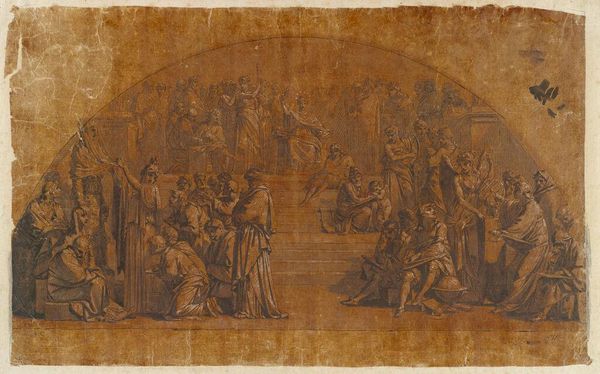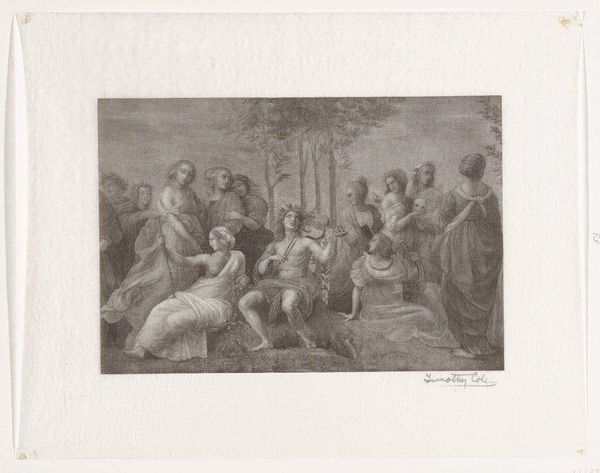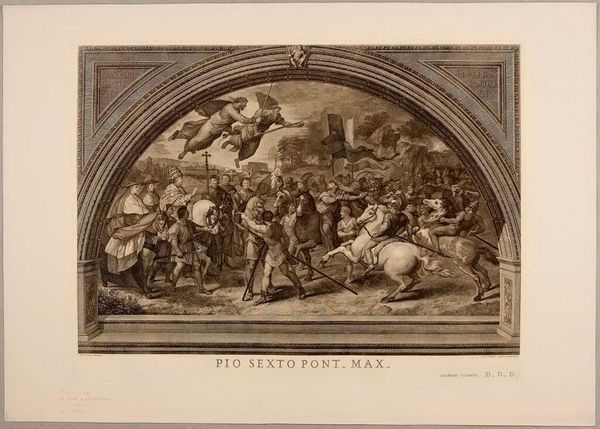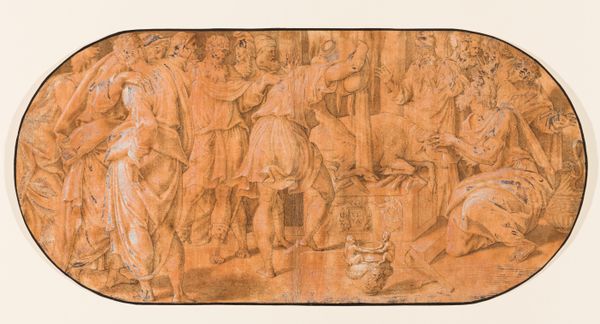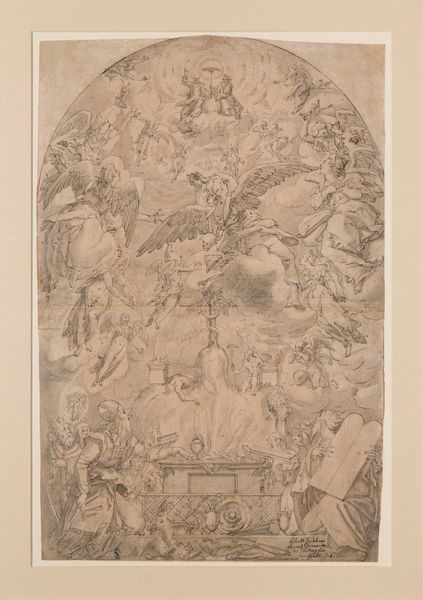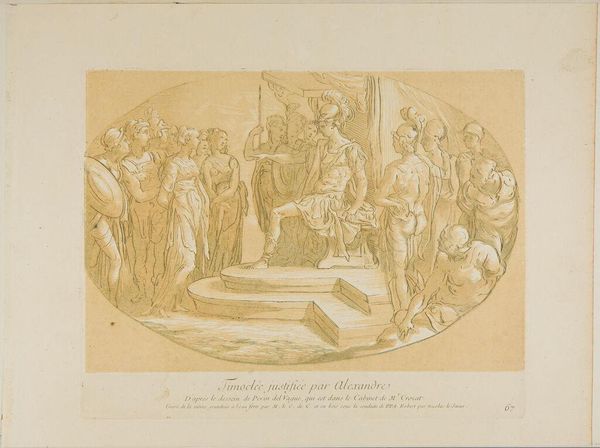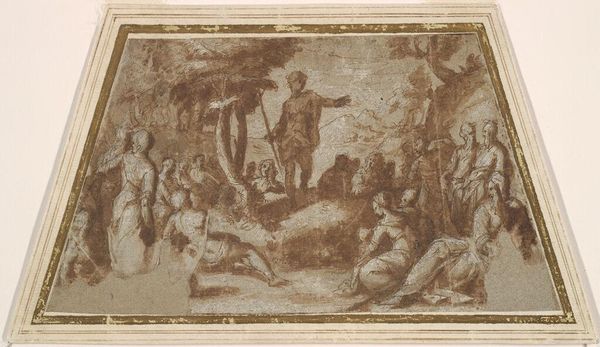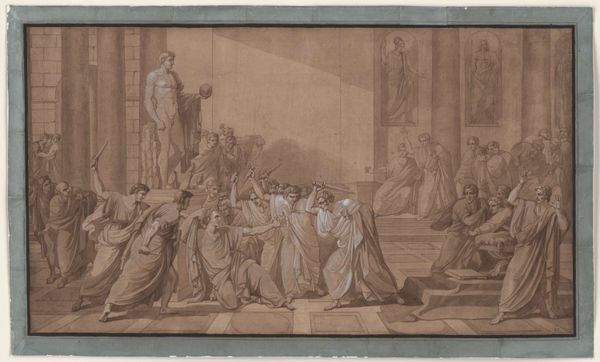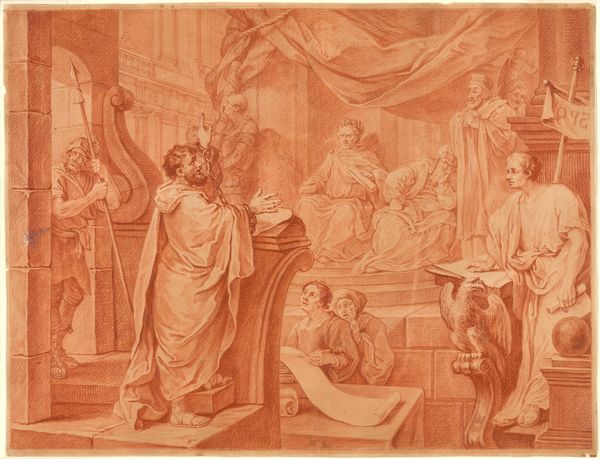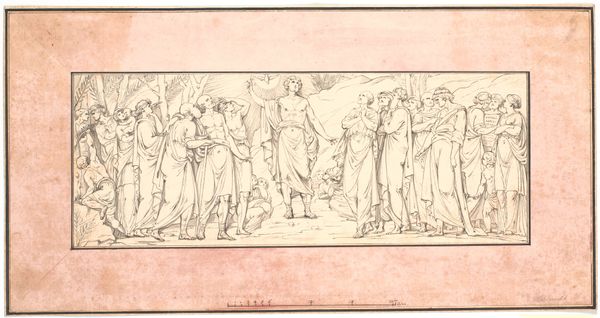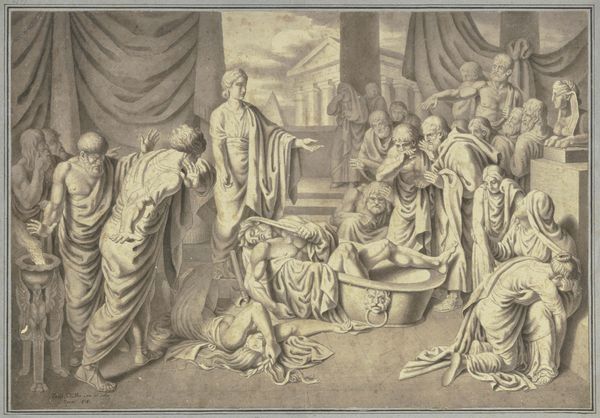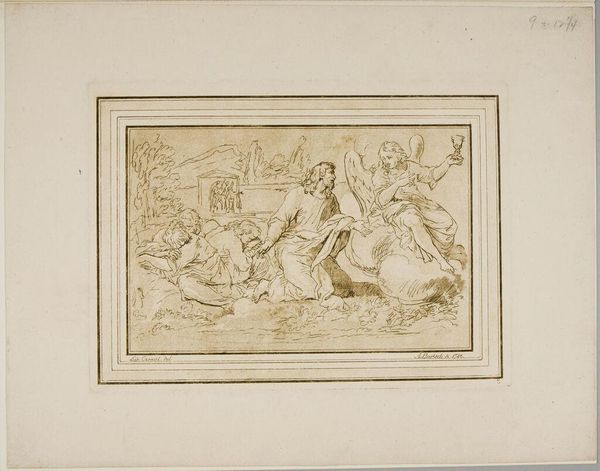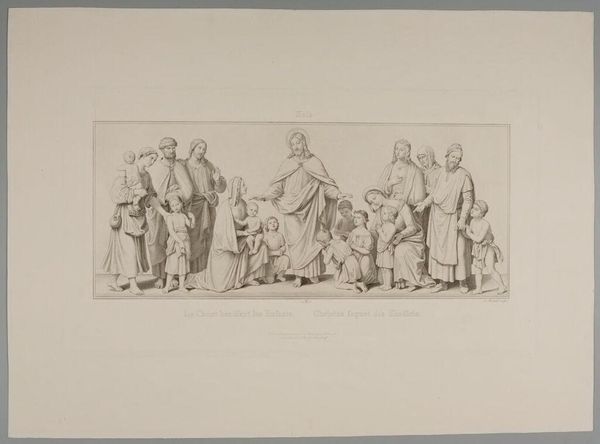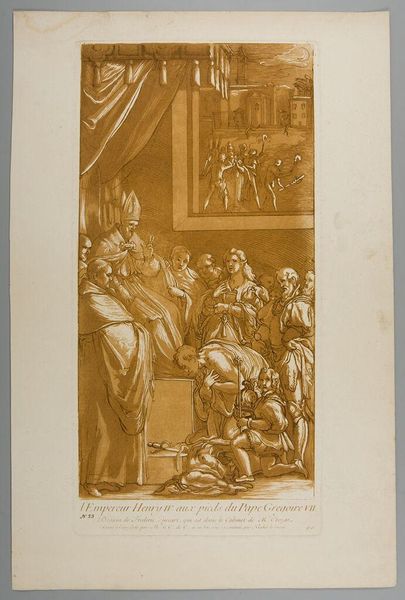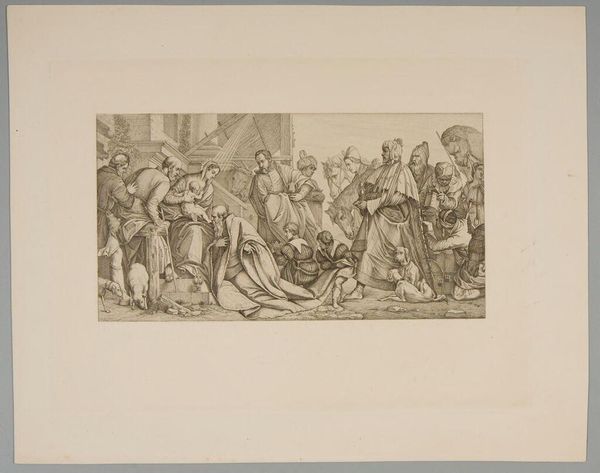
drawing, graphite, pen
#
portrait
#
drawing
#
neoclacissism
#
allegory
#
figuration
#
romanesque
#
roman-mythology
#
graphite
#
pen
#
history-painting
#
academic-art
Dimensions: 21 x 30 cm
Copyright: Public domain
Curator: Looking at this image by Jean-Auguste-Dominique Ingres, a drawing called "The Apotheosis of Homer", I'm struck by its formal arrangement. There's an almost sculptural quality in its execution using graphite and pen. Editor: It certainly has an archaic feel. What immediately jumps out to me is its dense concentration of figures. It feels… oppressive, almost. As if too many voices are clamoring for attention. Curator: It is interesting to consider this as a "history painting". It’s not really about one specific moment, but more so a kind of ideal construction of historical legacy and the role of institutions in canonizing art and culture. Ingres' approach in representing figures from the Western canon reflects his personal political ideals. He portrays what he considers significant about Western culture. Editor: Yes, and looking at who Ingres places in this celestial gathering – artists, writers, and thinkers – raises interesting questions. The composition itself presents a very deliberate hierarchy, both in terms of positioning and representation. How might those choices reflect societal norms and power structures, and whose stories get told through art? Curator: Right. It asks how this imagery reflects political ideas prevalent in European culture at the time. We see Homer enthroned at the center. Consider that it’s difficult not to see Ingres asserting a specific artistic lineage and affirming the importance of the classical tradition, a tradition he situates himself within, of course. Editor: So much about visual representation ties to ideas concerning identity, gender, and politics. The work clearly speaks of, and maybe even strives for, a perceived timeless, universal truth rooted in classical antiquity and presented in Ingres’ distinctly European aesthetic. How are such assumptions about artistic superiority challenged today by art historians? Curator: It does ask important questions about which voices are amplified and who defines artistic significance. Perhaps seeing Ingres grappling with defining “greatness” is as revealing as the pantheon he presents. Editor: Absolutely. It urges me to investigate the values it promotes, the histories it overlooks, and how our understanding of art history continuously evolves through broader engagement with critical perspectives.
Comments
No comments
Be the first to comment and join the conversation on the ultimate creative platform.
